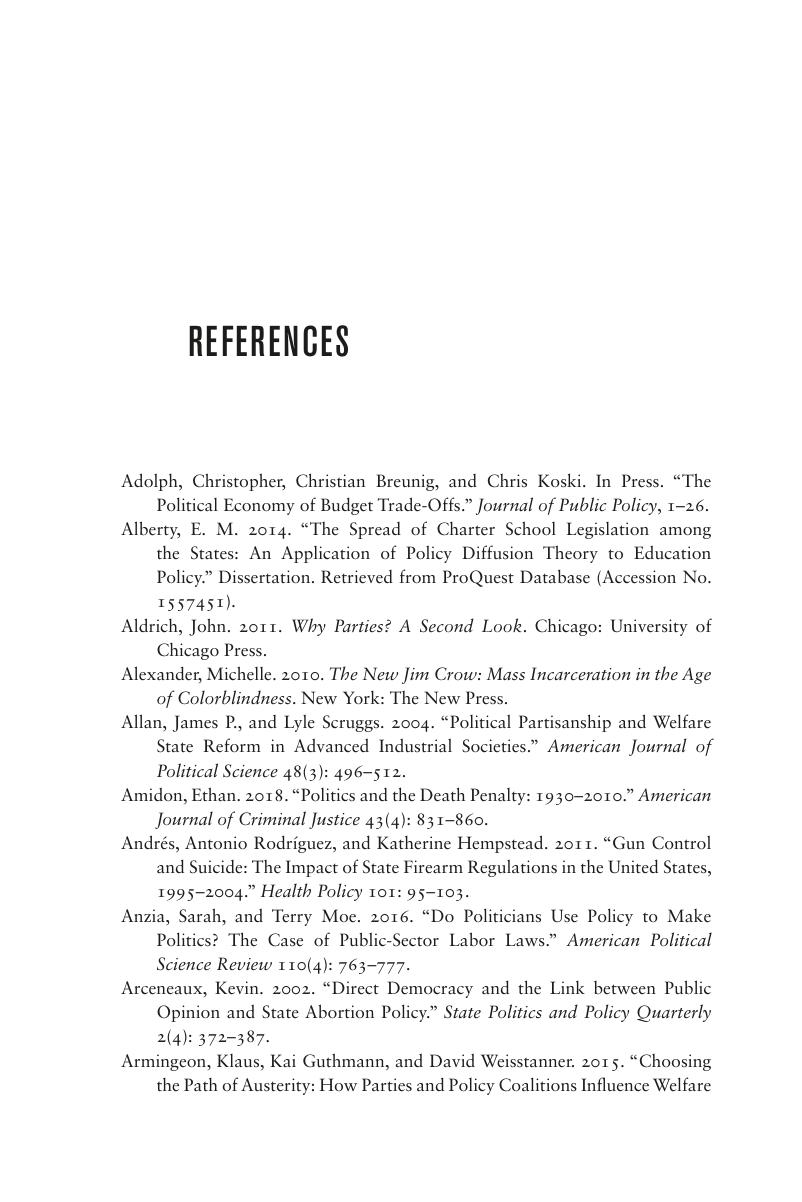Book contents
- Red State Blues
- Red State Blues
- Copyright page
- Dedication
- Contents
- Figures
- Tables
- Acknowledgments
- 1 Leviathan’s Resilience
- 2 The Rise of Republican Rule
- 3 Sticky Liberal Policymaking
- 4 Conservative Dilemmas in Action
- 5 The Mostly Missing Results of Republican Policies
- 6 The Elusive Red State Model
- References
- Index
- References
References
Published online by Cambridge University Press: 18 October 2019
- Red State Blues
- Red State Blues
- Copyright page
- Dedication
- Contents
- Figures
- Tables
- Acknowledgments
- 1 Leviathan’s Resilience
- 2 The Rise of Republican Rule
- 3 Sticky Liberal Policymaking
- 4 Conservative Dilemmas in Action
- 5 The Mostly Missing Results of Republican Policies
- 6 The Elusive Red State Model
- References
- Index
- References
Summary

Information
- Type
- Chapter
- Information
- Red State BluesHow the Conservative Revolution Stalled in the States, pp. 173 - 190Publisher: Cambridge University PressPrint publication year: 2019
